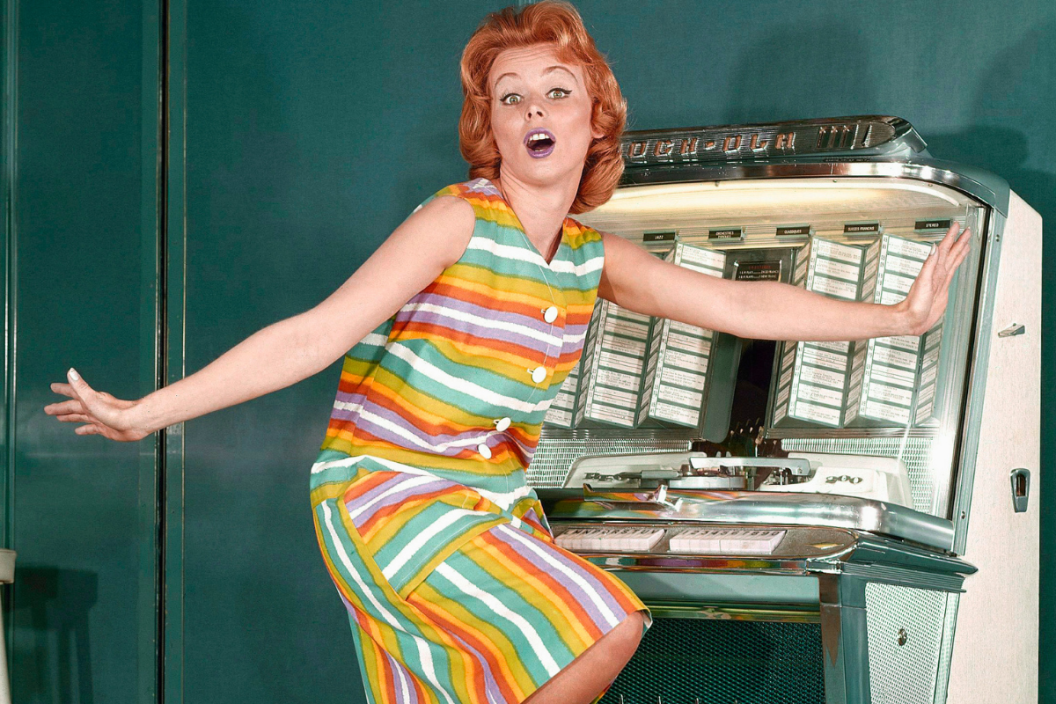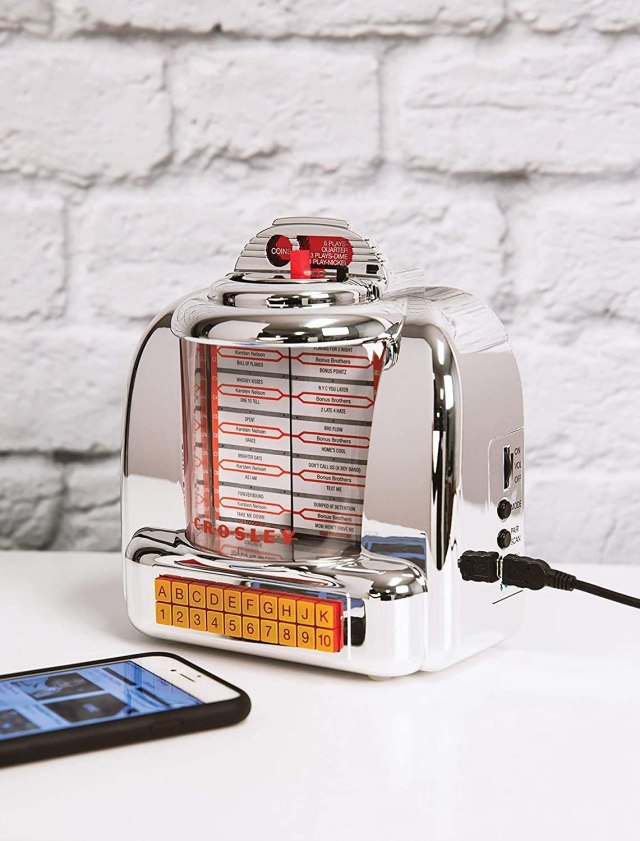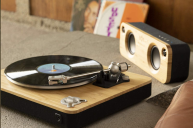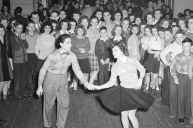One thing that most Americans from different generations have in common is the jukebox. While jukeboxes are now an invention of the past, many old diners and bars still have them, and there's nothing like eating at a diner and hearing retro tunes being played from a classic jukebox. The jukebox has permeated music culture, with many songs even referencing the machine, such as Alan Jackson's "Don't Rock The Jukebox" and Joe Diffie's "Prop Me Up Beside the Jukebox (If I Die)." The jukebox was popular through much of the 20th century, with its popularity reaching its height in the 1950s, and most people probably picture the multicolored, bubblier music machine from the '50s when thinking about a jukebox. However, the history of the jukebox goes far beyond the era depicted in shows like Happy Days.
The first jukebox wasn't even called a jukebox, but rather a "nickel-in-the-slot phonograph," and it came about in the late 1880s. The state-of-the-art invention, engineered by Louis Glass and William S. Arnold of San Francisco, was a coin-operated machine that was a modification of the phonograph, invented by Thomas Edison. The first of these music players was put at the Palais Royal Saloon in San Francisco on November 23, 1889. These early jukeboxes also had "listening tubes," which acted as headphones. More machines started popping up around the area, and in 1890, Glass reported that the machines had taken in a sum of more than $4,000.
The jukebox continued evolving, and in 1918, Hobart C. Niblack created a way for the machine to automatically change records, leading to a new kind of jukebox released by Automated Musical Instrument Company, or AMI. Justus P. Seeburg also contributed to the evolution of the machine by inventing a record player that was coin-operated as well as a version that could play up to 10 turntables. Other jukebox manufacturers included Wurlitzer and Rock-Ola. In 1940, the word "jukebox" finally came into use, named after "juke-joint," which was a term for a music establishment, as well as the Gullah word "juke," which means "disorderly, rowdy, or wicked."
Read More: The Remarkable History of the Ryman Auditorium, 'The Mother Church of Country Music'
In the 1940s, the jukebox started evolving into the version we know today with colorful designs. Manufacturing stopped during World War II, however, as the materials were needed for the war effort. After the war, jukebox manufacturing continued, with the Seeburg Corporation introducing the vinyl record jukebox that used 45 rpm records. Memorable versions of the jukebox over the years include the 1946 Wurlitzer 1015 (designed by Paul Fuller), the 1947 Rock-Ola 1422, the 1949 Seeburg Select-o-matic, and the 1952 Seeburg M100C. The jukebox stayed popular through the '60s, but with the advent of portable radios, cassette tapes, and compact discs, jukeboxes fell by the wayside. These days, retro jukeboxes can still be found in diners, bars, arcades, and other establishments.
The evolution of the jukebox hasn't completely stopped today. A new kind of digital jukebox has started popping up in establishments, with TouchTunes being the most popular. These machines allow users to connect withe old-style jukebox experience by using a digital touch pad to play popular music. Some digital jukeboxes also connect to accompanying apps, and some even take photos of patrons while they are listening to the music. While there are many more modern ways to listen to music today, the jukebox was a revolutionary invention that had a major influence on the history of music.
Crosley CR1120A-SI Diner Mini Jukebox Bluetooth Tabletop FM Radio
Now Watch: 'Me and Bobby McGee': The Story Behind the Song






